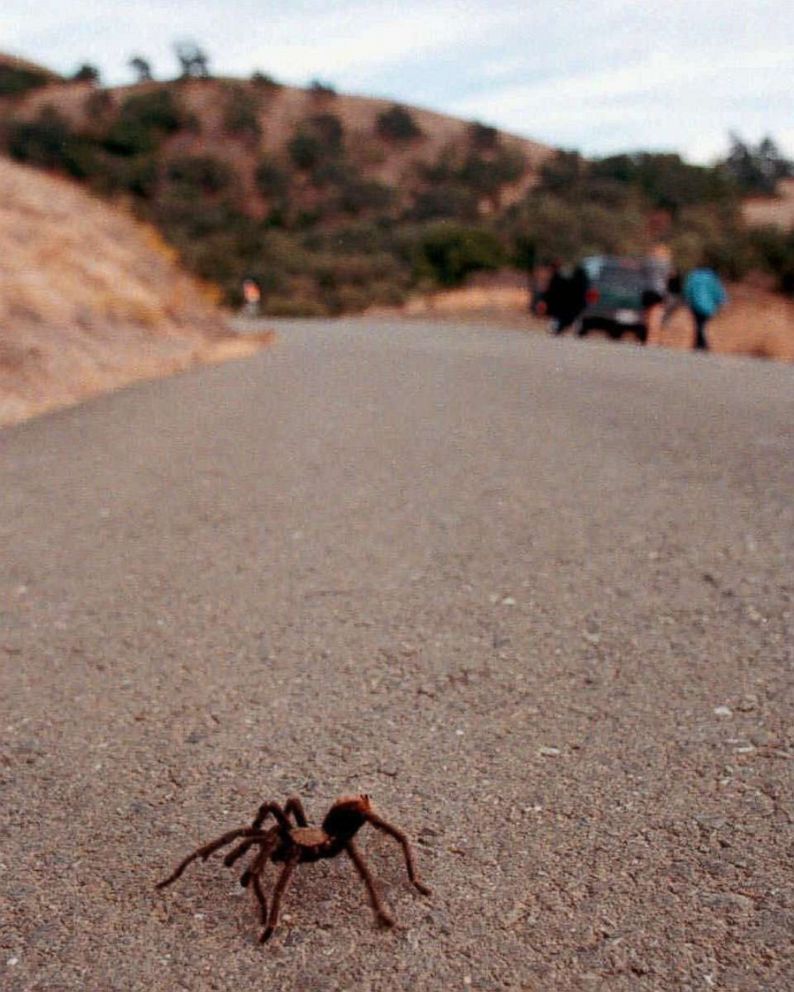Warm weather amplifies tarantula mating season, but don't fear these 'gentle giants'
One entomologist described tarantulas as the "puppies of the spider world."
Tarantulas are coming out in droves in Northern California just in time for Halloween. But the gargantuan spiders aren't nearly as spooky as they look.
Mating season is in full force outside the Bay Area
Warm weather in the region is encouraging male tarantulas to come out and mate, said Cameron Morrison, supervising state park peace officer for Mount Diablo State Park, where a large population of the spiders resides.
The mating season at Mount Diablo typically begins the first week of September, but Morrison and other experts didn't see large numbers of the spiders until this past weekend, he said.
The females live in hillside burrows about the size of a nickel, and the males wander from burrow to burrow searching for a female seeking a mate, Morrison said.
Morrison fears that in past years the park may have encouraged too many visitors, which he theorizes negatively affected tarantulas and their mating process. Ever since the number of hikes offered at the park has been scaled back, more tarantulas have appeared, he said.

Why you shouldn't be afraid of tarantulas
Although many are frightened of tarantulas because "they are big and they are hairy," Morrison described them as "gentle giants."
Tarantulas aren't aggressive, the experts said. Like most spiders, they have venom, but the venom is mild and not painful to humans, Jason Bond, a professor of entomology and nematology at the University of California Davis, told ABC News. Despite their relatively large fangs, in the unlikely event of a bite, Morrison said, it would be less severe than a bee sting.
"They're very reluctant to bite you," Morrison said. "I've never had someone say that they were bitten by a tarantula."
Their main method of defense is the hairs on their backs, which can rub off and cause irritation, Morrison said. The hairs have tiny barbs on them, which feel like fine fiberglass and cause a reaction on the skin, Bond said. So, if an animal like a dog or coyote gets the hair in its nose, it will start to itch, Morrison said.
"Otherwise, they're generally sort of non-threatening," Bond said, adding that they have poor eyesight.
Paul Marek, an entomology professor at Virginia Polytechnic Institute and State University who had a tarantula species named after him in 2016, even described them as the "puppies of the spider world."
In addition, Tarantulas are extremely delicate, and both Morrison and Bond recommended people should avoid handling them. Even a drop from two or three inches onto a hard surface could kill or severely injure a tarantula, causing their abdomen to burst.
"The individual more likely to get injured when handling a tarantula is the tarantula," Bond said.
The tarantulas, as with all other living species, are protected at Mount Diablo State Park, and visitors are not allowed to disturb them, Morrison said.

How tarantulas differ from other spiders
Tarantulas tend to be slow and move with purpose, unlike other spiders, which move more erratically, Morrison said.
"If a spider is running, it just runs," Morrison said. "A tarantula is much more tentative and moves it one direction, thinking about why it's moving there, feeling each step a little more."
Females can live a whopping 25 years, while males usually live about six years. Once males reach maturity, they set off to mate and die soon after, Bond said.
"They’re not returning home," Morrison said. "That’s their final voyage, basically."
In contrast, regular spiders, or araneomorphae spiders, typically only live to about a year, sometimes two or three, Bond said.
Tarantulas belong to a group of spiders called mygalomorphae spiders, which also include trapdoor spiders and funnel-web spiders, Bond said. These types are considered "primitive" because of their simple method for making silk for webs and due to their different respiratory systems, which use two pairs of book lungs, he added.




